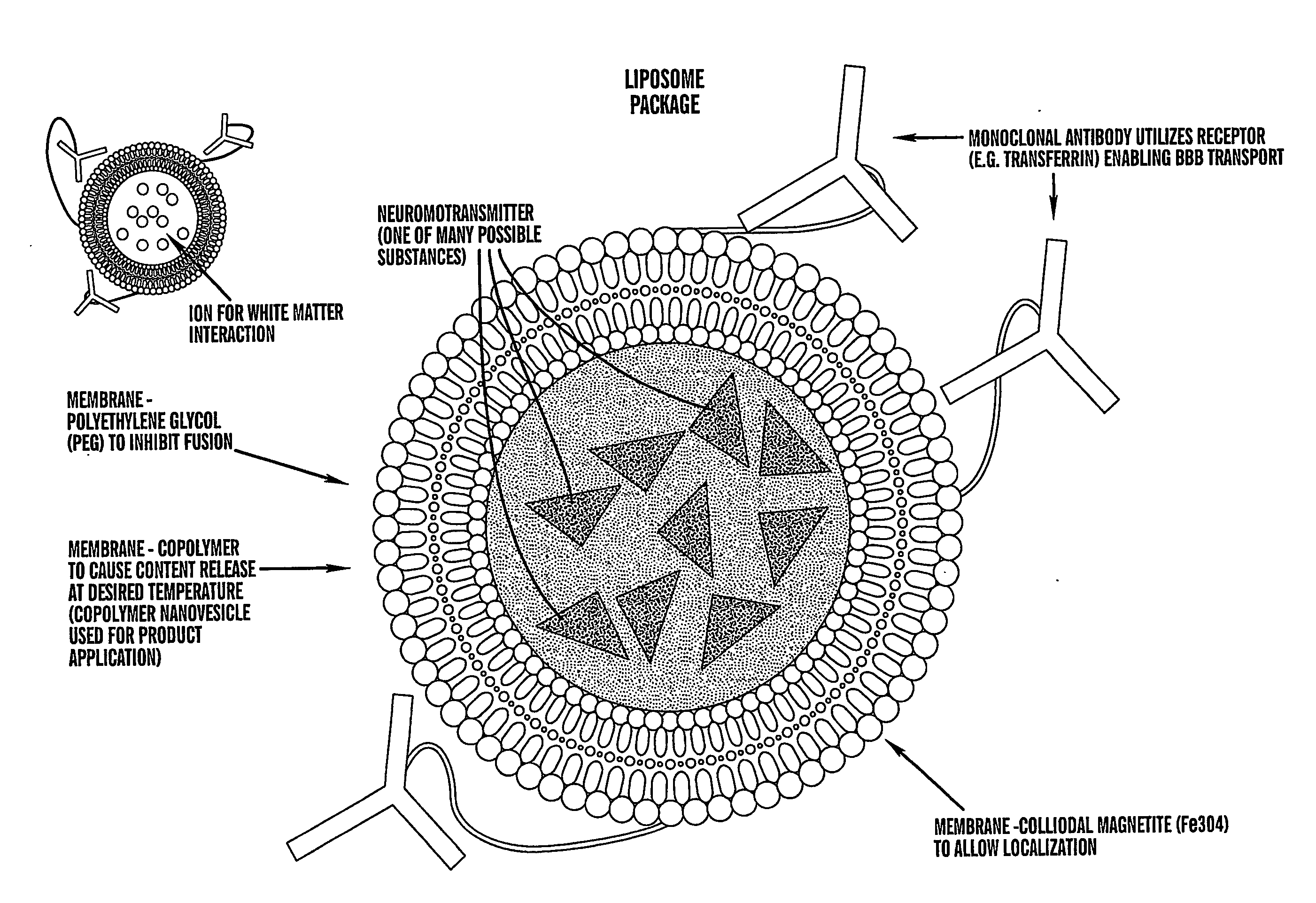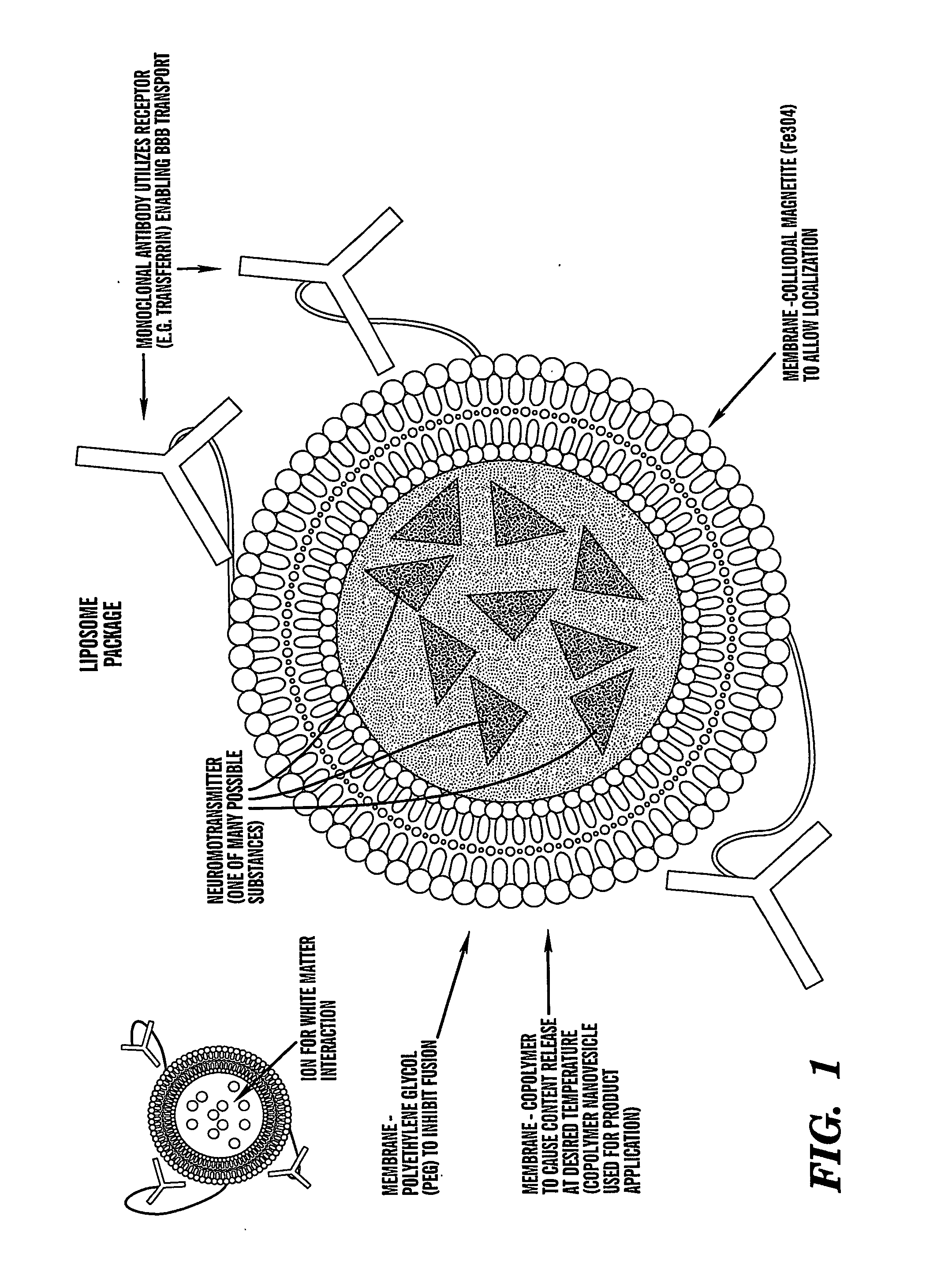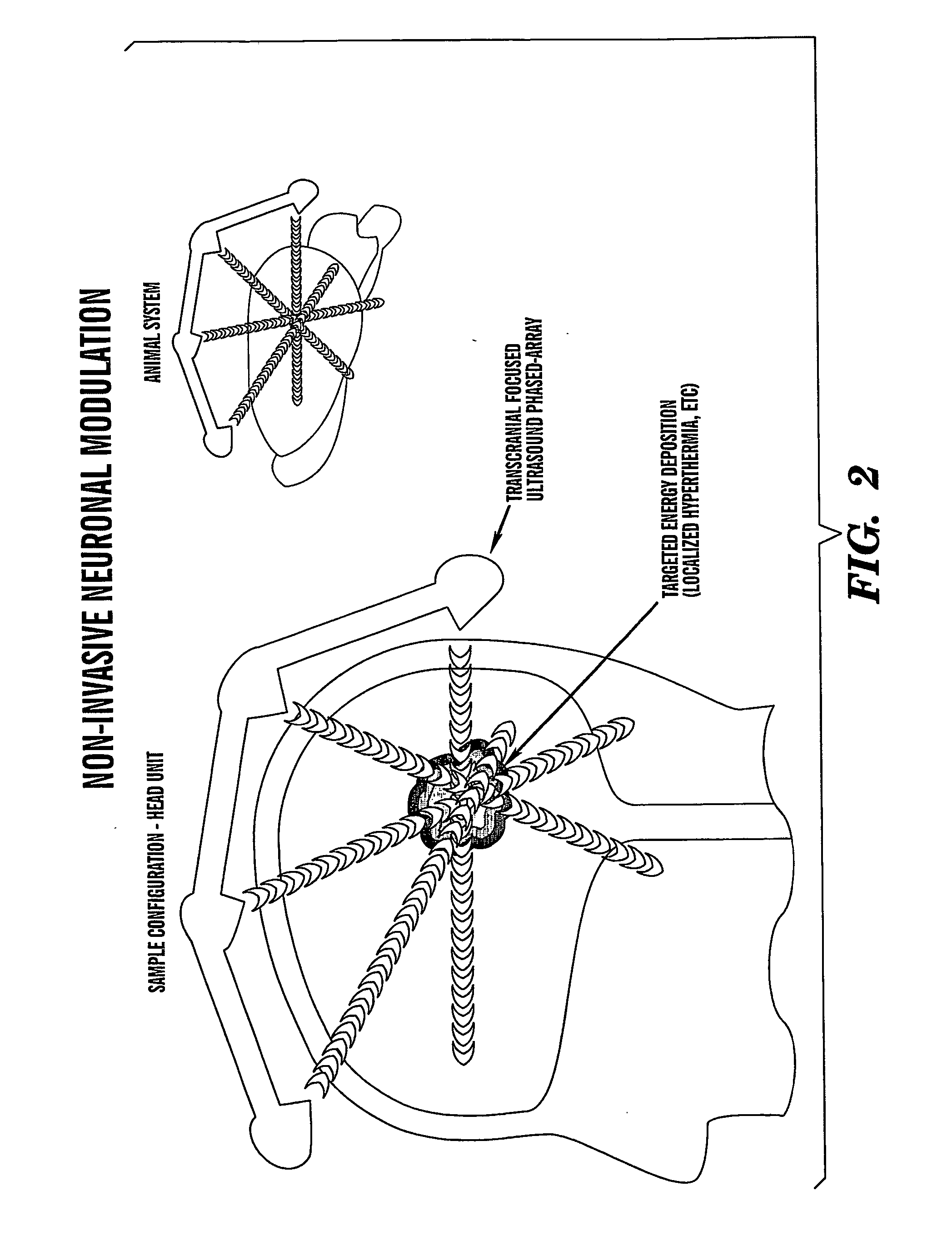Localized non-invasive biological modulation system
a biological modulation and non-invasive technology, applied in the field of localized non-invasive delivery of biological modulating agents, can solve the problems of many systemic methods, inability of many agents to cross the blood-brain barrier, and the deleterious effect of agents
- Summary
- Abstract
- Description
- Claims
- Application Information
AI Technical Summary
Benefits of technology
Problems solved by technology
Method used
Image
Examples
example 1
Release of GABA from Lipid-Polymer Thermosensitive Nanovesicles
[0094] The neurotransmitter GABA has been incorporated into lipid polymer nanovesicles. The results of release of GABA from these lipid-polymer nanovesicles is depicted in Tables 2-5.
[0095] Spectrophotometer analysis using ninhydrin amino acid reagent was used to analyze the release of GABA (g-aminobutyric acid) which was encapsulated within lipid-polymer thermosensitive nanovesicles. These experiments demonstrate for the first time that neuromodulators can be encapsulated and their release controlled using the methods described herein. The following tables illustrate an exceptionally sharp GABA release curve and confirm the ability to exhibit precise control over concentrations and overall kinetics when releasing neuromodulators and other particles.
TABLE 2DATA SET 0212130 minute total reaction time570 nm wavelength120 nm diameterBlankSup5RT38(3)38(15)41.5(3)41.5(15)100.00680.00530.00620.00990.22590.32072−0.00010.004...
example 2
Protocol Summaries for Animal Models
[0099] Protocol summary for the treatment of epilepsy in a rodent model. 1) Neural activity recorded while seizure induced in subject animal. 2) Subject injected with particle packaged inhibitory neurotransmitter. 3) Transcranial Focused Ultrasound tFUS) activated and focused on seizure foci. No external energy source is required for certain forms of epileptic activity. 4) Inhibitory neuromodulator released at seizure foci and epileptiform activity subdued.
[0100] Protocol summary for the treatment of Alzheimer's disease in a rodent model. 1) Subject animal bred with Alzheimer's dementia mutation. 2) Control, non-Alzheimer's, non-tFUS animal run through memory task. 3) Alzheimer's animal run through an identical memory task, demonstrating diminished task completion ability. 4) Subject injected with particle packaged neuromodulator (i.e. physotigimine, an AchE inhibitor). 5) tFUS targeted to hippocampal region of Alzheimer's subject. 6) Synthetic ...
PUM
 Login to View More
Login to View More Abstract
Description
Claims
Application Information
 Login to View More
Login to View More - R&D
- Intellectual Property
- Life Sciences
- Materials
- Tech Scout
- Unparalleled Data Quality
- Higher Quality Content
- 60% Fewer Hallucinations
Browse by: Latest US Patents, China's latest patents, Technical Efficacy Thesaurus, Application Domain, Technology Topic, Popular Technical Reports.
© 2025 PatSnap. All rights reserved.Legal|Privacy policy|Modern Slavery Act Transparency Statement|Sitemap|About US| Contact US: help@patsnap.com



